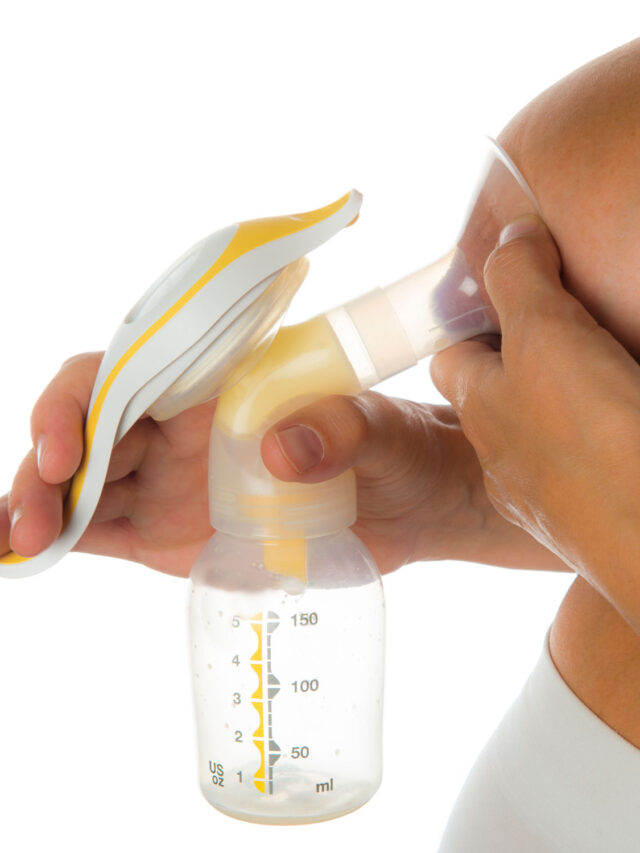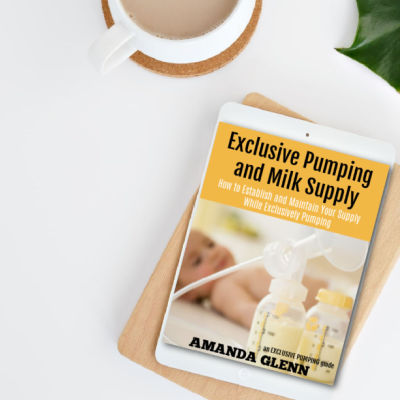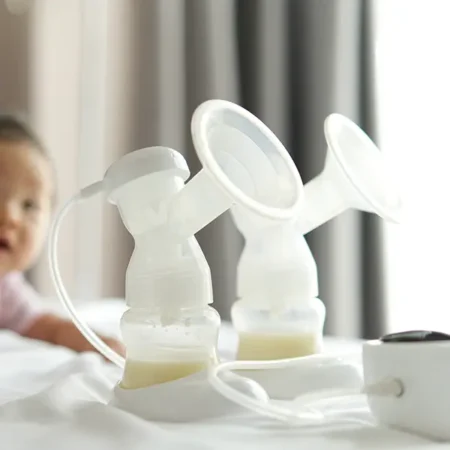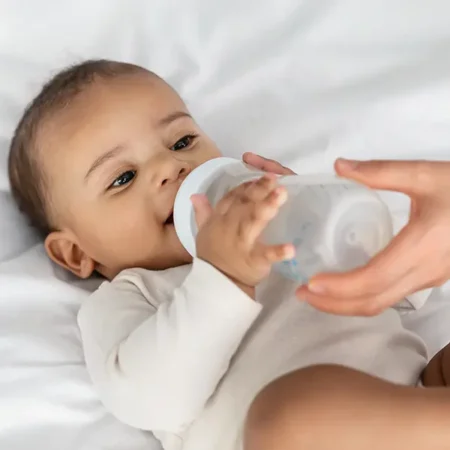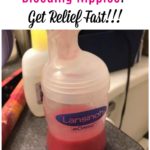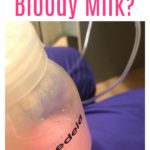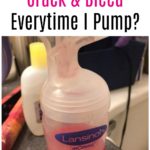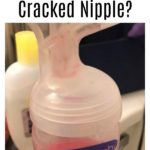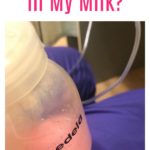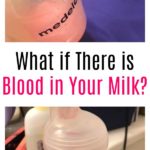What causes bleeding nipples when pumping, and is it safe to give breast milk with blood in it to your baby? Here’s what you need to know about what you should do if you pump bloody breast milk and how to heal your damaged nipples.
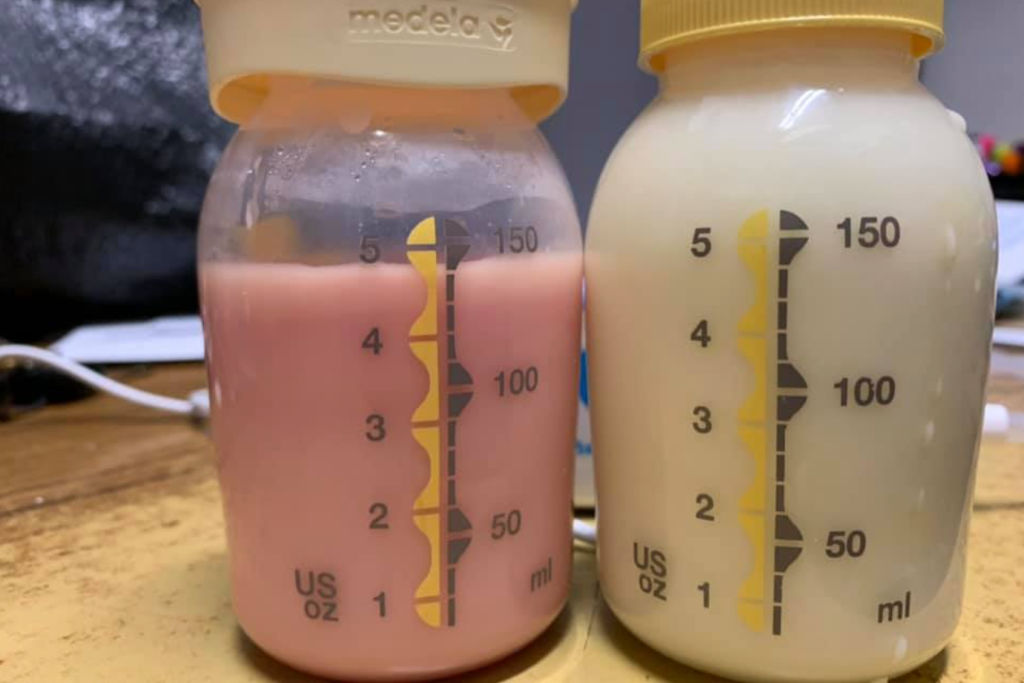
This post may contain affiliate links, which means if you click a link and purchase something, I may make a small commission at no additional cost to you. I only recommend products I love! More information here.
How to Fix the Underlying Issue / Cracked Nipple Causes
The first thing to do when you are breastfeeding and have nipples that are bleeding or cracked is to identify what’s causing the damage and fix it, so that no additional harm is done. Then, you can focus on healing.
Below are the mostly likely causes of cracked and bleeding nipples from pumping.
Breast Shield Size
The most common cause for nipple pain when you are exclusively pumping is using flanges that are either too big or too small.
When the flange is too small, your nipple rubs too much against the sides of the tunnel. When it’s too big, too much of your areola is pulled into the breast shield tunnel, leading to soreness.

In addition to nipple soreness, using the incorrect breast shield size can sometimes crack or damage the nipple.
Figuring out what size breast shield you need can be challenging. You can get professionally sized, try measuring your nipple yourself, or just try some different options to see what fits best. More on breast shield sizing here.
There are also alternative breast shield options, such as Pumpin Pals. They send you three sizes at once, which is helpful for finding the right size. More on breast shields options here.
Lubrication
Some women find that the friction from pumping frequently can cause cracked nipples, even if their breast shields are properly sized.
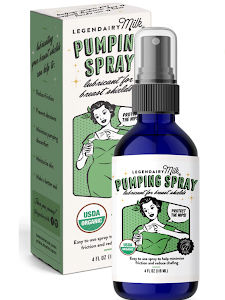
One thing that can help with this is lubrication. Some people find that using a pumping spray or applying coconut oil to their breast shields before they pump makes pumping more comfortable and helps prevent nipple damage.
More information on using a pumping spray here.
Nipple Positioning
If your nipple isn’t centered correctly in the breast shield, it may be pulled into the tunnel in the wrong way, which can injure it.
Before you start pumping, make sure that your nipple in centered in the breast shield.
Pump Vacuum Settings
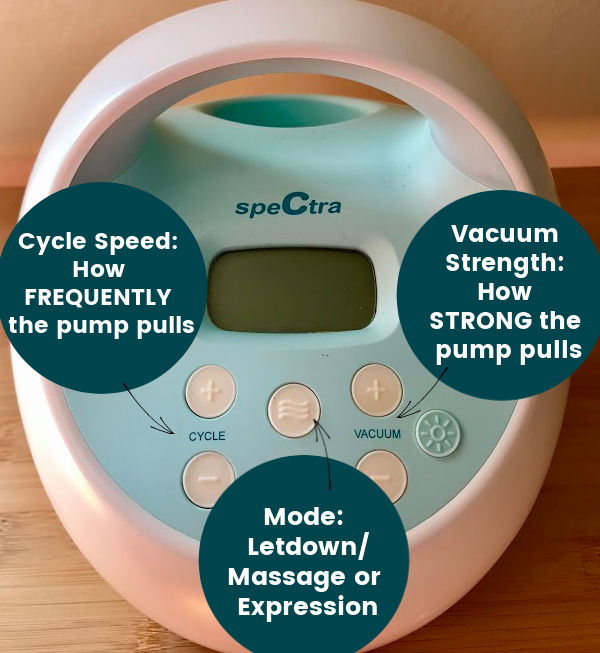
Your pump’s vacuum strength should be set at the highest level that is comfortable for you.
Be careful not to go above that, even if you’re trying to get more milk when you pump. Not only can pumping with suction that’s too strong cause nipple damage, pain while pumping can inhibit letdown – which can actually cause you to pump less.
Other Causes
Other issues that can exacerbate pain and damage from bleeding and cracked nipples include:
- Thrush
- Milk blisters
- Not changing breast pads frequently enough
- Irritation from your bra or something else (such as a diaper bag strap rubbing against your breast)
It’s a good idea to consider whether any of these might be an issue, and if so, seek treatment/adjust as necessary.
Treatment for Cracked and Bleeding Nipples
Once you’ve figured out the root cause of your cracked or bleeding nipples, you still might have some pain while the damage heals.
Unfortunately, you can’t take a break from pumping while you heal. If you were to stop pumping, your milk supply will likely be affected, and there’s a higher chance of issues with clogged ducts and mastitis.
Here are a few home remedies for cracked nipples that may be helpful to heal nipple pain faster while continuing to pump on your schedule.
Before Pumping
- If you’re in pain, consider taking a pain reliever like Tylenol or Motrin (both of which are compatible with breastfeeding) to help with it.
- Use a warm compress, like a washcloth, to help relieve nipple pain.
While Pumping
- Nipple pain tends to be worse before letdown. Set yourself up to pump just on the side that is the least damaged, and then once your milk lets down, set yourself up on the other side as well for the rest of the pumping session.
After Pumping
- Once you’re finished pumping, you may want to use a warm compress again for the pain.
- A saline rinse might help heal your nipples more quickly (instructions for how to do this here).
- Constant moisture against damaged nipples can prolong the healing process, so if you’re wearing breast pads, change them frequently. You may also want to pat your nipple and aerola dry after pumping.
- Applying nipple cream or APNO after pumping may speed the healing process.
- If the damage to your nipples makes wearing a bra (or doing anything besides going topless all the time) unbearable, Medela makes silicone SoftShells that can protect your nipples from your clothes. The SoftShells have holes that allow for air to get in to help heal your nipples.
Need help with exclusive pumping? Use EPUMP30 for 30% off
Should you dump breast milk with blood?
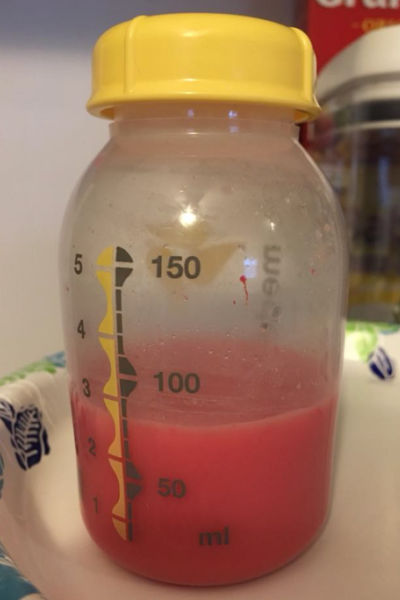
Experts say that it is safe to feed breast milk with some blood in it to your baby. Per Dr. Jack Newman:
“Sometimes when a baby swallows blood he may spit it up because it irritates his stomach, but it really does him no harm.”
Additionally, Infant Risk says:
“With blood, there’s not much you can do about its presence in milk except ignore it. Small amounts of human blood in milk is not a problem for a breastfeeding infant. Just the smallest drop of blood will noticeably stain your milk quite red. It’s not anything to worry about.”
Therefore, in most cases it’s not an issue, and you can go ahead and feed it to your baby.
However, if the idea of giving it your baby makes you uncomfortable, it’s obviously fine to dump it, too. (I pumped a bottle of bloody breast milk once that looked like it would have been perfect for a vampire baby, and I decided to dump it.)
Blood or Bacteria?
One other thing to consider before feeding is to be sure that the pinkness or redness is caused by blood.
If you are not positive that the redness in your milk is caused by blood – especially if it turns pink or red after you finish pumping – talk to your pediatrician to clear it before feeding.
This is because a bacteria known as Serratia marsescens can also turn breast milk pink or red, and large quantities of this bacteria can be dangerous for your baby.
Have you pumped bloody breast milk? Let us know about your experience with bleeding nipples when pumping in the comments!
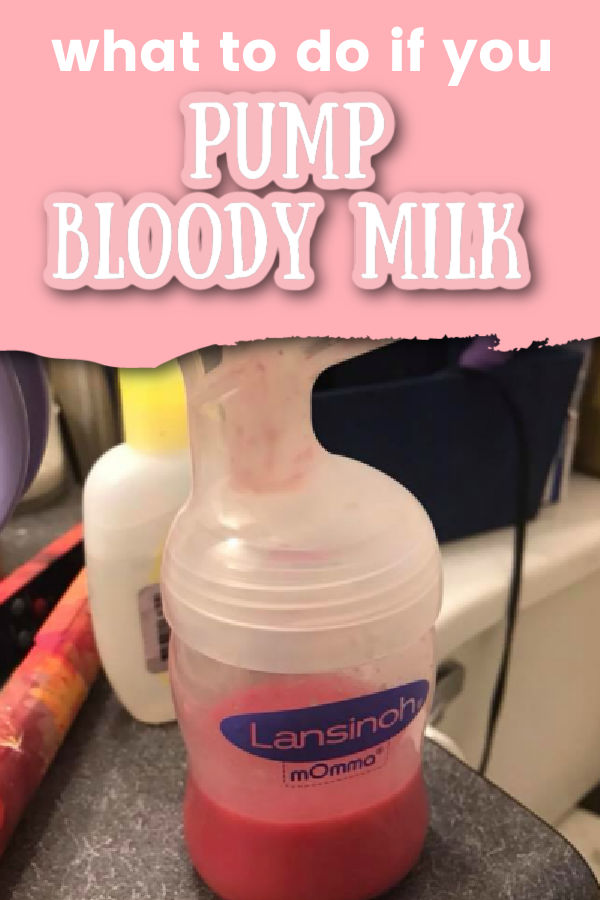
References
- Bonyata, Kelly, IBCLC. “Healing Tips for Nipple Cracks or Abrasions.” https://kellymom.com/bf/concerns/mother/nipplehealing/
- Infant Risk Center. “RED Milk. What causes your milk to turn red?” https://www.infantrisk.com/content/red-milk-what-causes-your-milk-turn-red
- Flora, Becky, IBCLC. “Treating Sore, Cracked, or Bleeding Nipples.” https://www.motherandchildhealth.com/breastfeeding/treating-sore-cracked-or-bleeding-nipples/
- Medical News Today. “What to Know about Open Wound Care.” https://www.medicalnewstoday.com/articles/325260.php
- Mother-2-Mother. “Nipple Pain.” http://www.mother-2-mother.com/nipplepain.htm
- Pearson-Glaze, Philippa. “Blood in Breast Milk.” https://breastfeeding.support/blood-in-breast-milk/
